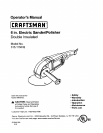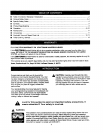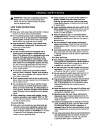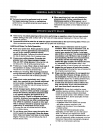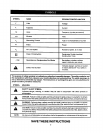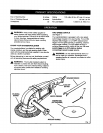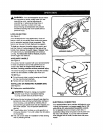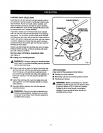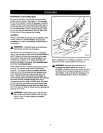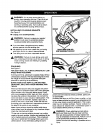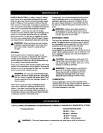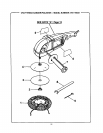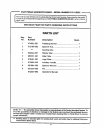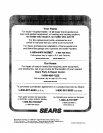
_i WARNING: Your sander/polishershould never
be connected to power supplywhen you are
assembling parts, making adjustments,
assembling or replacing sanding discs or
bonnets, cleaning, or when not in use,
Disconnecting sander/polisher will prevent
accidental startingthat could cause serious
personal injury.
LOCK-ON BUTTON
See Figure 2.
Your sander/polisher is equipped with a "lock-on"
feature, which is convenient when continuous opera-
tion for extended periods of time is rrequired. This
feature can be used for both high and low speeds.
To lock or=, depress the switch tdgger, push in and
hold the "lock-on" button located on the side of the
handle, then release the switch tdgger, Release "lock-
on" button and your sander/polisher will continue
running. To release the Iock,.on feature, depress
switch trigger and release it.
AUXILIARY HAN DLE
See Figure 2.
An auxiliary handle is pocked withyour sander/polisher
for ease of operation and to help prevent loss of
control.Any loss of control could result in an
accident, causing possible serious personal injury.
The motor housingsare designed so that the aL_iliary
handle can be installed on either side of the unit,
TO INSTALL:
• Fit bolt through hole in motor housing and thread
into hex nut provided internally.
• Tighten bolt and handle securely.
INSTALLING OR REMOVING RUBBER DISC
See Figure 3,
• Unplug your sander/polisher.
,_ WARN ING: Failure to unplugyour sander/
polisher could result in accidental starting
causingpossible sedous personalinjury.
• Position the tool as shown in figure 3 and align the
spindle lock hole with the two half-circle notches in
motor housing, Lock spindle by inserting the pin
provided through spindle lock hole and trapping it in
half circle notches, This will prevent spindle from
rotating,
• Thread rubber disc, flat face up, onto spindle in a
clockwise direction. Turn until rubber disc shoulders
on the spindle.
• The unit is now ready for installation of the sanding
disc or polishing bonnet.
RUBBER_$C
CLOCKWISE
ELECTRICAL CONNECTION
Your sandedpelisher has a precision built electric motor.
It should be connected to a power supply that is 120
volts. 60 Hz_AC only (normal household current),
Do not operate this tool on direct current (DC). A
substantial voltage drop will cause a loss of power and
the motor will overheat. If your tool does not operate
when plugged into an outlet, double-check the power
supply,
7



